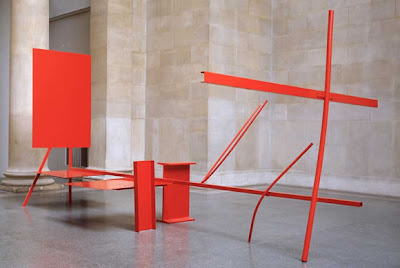Fires, neglect, poor planning and migration have turned a growing problem into a threat of extinction for one of Istanbul's least appreciated architectural forms: the wooden house.
Demolition sites are everywhere in Suleymaniye. Chaotic plots of broken beams, rubble and grubby sandbags; they dot the winding streets of this Istanbul neighbourhood perched on a hillside below an Ottoman mosque.
Further down, towards the waters of the Golden Horn inlet of the Bosphorus, fences surround a construction site where a tunnel for a new metro line bores into the ground.
"There used to be another row of wooden houses there," says Stein-Gunnar Sommerset, a Norwegian academic who has a house nearby.
Istanbul - one of this year's European capitals of culture - is renowned for its great stone monuments, including the Byzantine Aya Sofya and the Blue Mosque.
But Turkey's largest city also has a long tradition of construction in wood, and in the early 20th century timber structures accounted for most of Istanbul's housing stock.
Many of those traditional buildings have vanished and the survivors are under threat.
Martin Bachmann, an architectural historian at the German Archaeological Institute in Istanbul, estimates that there are only about 250 timber houses left in the entire city. In a mere three streets clustered around the mosque in Zeyrek, a neighbourhood once renowned for its wooden structures, 10 demolitions took place in the last six years.
"Compared to the historical situation it's nearly nothing," says Bachmann.
Devastating fires
According to Zeynep Ahunbay, a Professor of Architectural Restoration at Istanbul Technical University, wooden construction took off in the city in the 16th century."There was a strong earthquake in 1509 and the earlier buildings, mixed structures, they were not so good," she explained, adding that the majority of houses that survive today date from the late 19th and early 20th centuries. Built with oak frames and clad in pine, the houses were painted and many had distinctive bay windows on the higher floors and lengthy eaves.
The decline of the timber houses began early in the 20th century.
After devastating fires during World War One, the authorities banned construction in wood. In the 1920s foreign minorities - who dominated the ranks of the skilled craftsman needed to build and maintain the structures - began to leave.
Then, following World War Two, the Turkish middle classes started to desert old wooden neighbourhoods like Zeyrek and Suleymaniye for more modern accommodation. In their place came poor rural migrants who had neither the means nor the experience to maintain the houses.
As the years passed more and more of the houses vanished; some demolished, others destroyed by fires, or simply neglected until they collapsed. Many of those that do survive are in an advanced stage of decrepitude.
UNESCO to decid
Emine Erdogmus, a member of the wood committee of the International Council on Monuments and Sites and an Istanbul resident, says that the while houses are officially protected by law, regulations are widely flouted.
"Our laws are perfect, up to European standards," she said. "It's the people who are playing with the laws."
Concern about the houses extends beyond Turkey too.
This summer UNESCO's World Heritage Committee will decide whether the Istanbul World Heritage Site, established in 1985, will be placed on an endangered list.
According to Mechtild Rossler, Europe and North American chief at the UNESCO World Heritage Centre, the condition and preservation of the timber houses will be one of the issues considered, along with a proposed new Golden Horn crossing.
Mustafa Demir - the mayor of Fatih Municipality, which includes many of the surviving wooden houses - says that preservation is a priority.
"One of the most important jobs is to protect the historic sites," he said, adding that while in the past renovation often meant demolishing a house, rebuilding in concrete and then adding wood cladding, a method that is now forbidden. Demir admitted though that there is a reluctance to spend public funds on houses in private ownership.
The Turkish authorities have made clear progress in some areas though. In 2006 the Istanbul Municipality set up KUDEB, the directorate of Conservation, Implementation and Inspection.
This organisation has streamlined the process required to gain permission to carry out repairs, and also runs training courses in the skills required.
"They learn to do windows, doors, roof construction, traditional building construction," explained Demet Surucu, an engineer in KUDEB's timber workshop. Surucu added that the workshop has so far repaired 55 houses.
Elsewhere, before his death in 2003, Turkish preservationist Celik Gulersoy initiated house restoration on Sogukcesme Street close to Aya Sofya, while more recently Sommerset is renovating two houses in Suleymaniye.
"I think it's a pity to see them decay, and it's possible to rescue them with modest means."
text from http://www.worldbulletin.net/news_detail.php?id=54512














